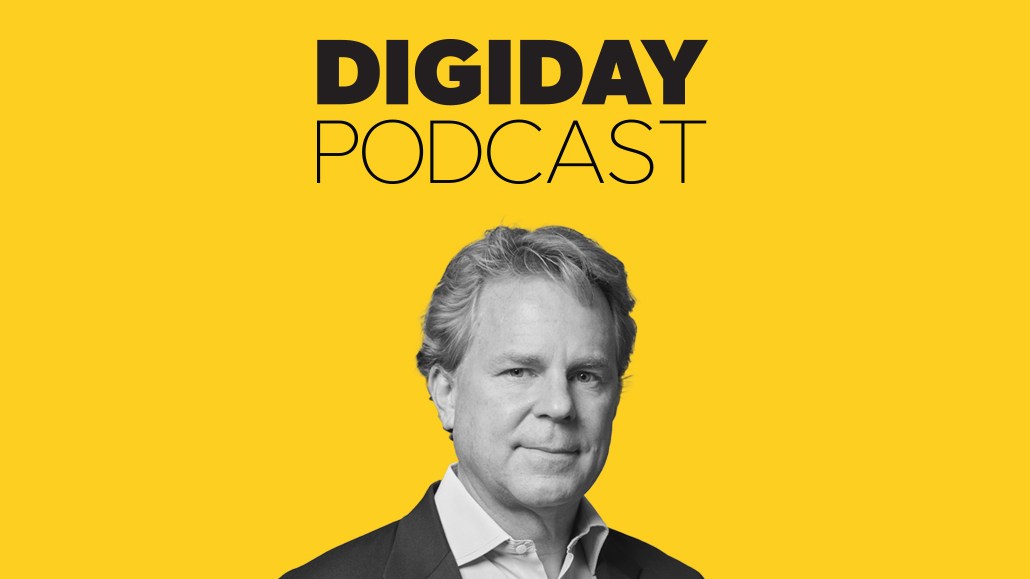Save 50% on a 3-month Digiday+ membership. Ends Dec 5.
Justin Smith explains how Semafor achieved profitable months in its first full year

Subscribe: Apple Podcasts • Spotify
Semafor is about to close the book on its first full calendar year, having launched in October 2022 as a media and events company. And despite launching during a tumultuous time for any media organization, Semafor’s co-founder and CEO Justin Smith said that his team had profitable months this fall, even coming close to breaking even in the fourth quarter of 2023.
This accomplishment was made possible thanks, in part, to a combination of designating events as a core segment of the business as well as keeping the team as lean as possible for as long as possible, Smith said on the latest episode of the Digiday Podcast.
And in the coming year, a continued focus on events, expanding the brand to additional international markets and investing in the website are all central to Semafor’s second year growth strategy.
Below are highlights from the conversation, which have been lightly edited and condensed for clarity.
Path to profitability
We made a profit in September, we made a profit in October [and] we’re very close to a profit in the fourth quarter. We’ve been operating for 13 months and those results are because of the very focused, intense approach that I just outlined, which is being disciplined on your cost structure and only investing when necessary in areas that are highly monetizable. Because our overall goal as a company is we want to as rapidly as possible achieve a sustainable business model for our journalistic mission.
Ad position: web_incontent_pos1
Our events business is very profitable in our first year. It’s driven significant seven-figure profits in our first year, and that’s obviously been a big part of our ability to break even across those months that I mentioned, and almost break even in the fourth quarter.
Hold out on hiring
One of our investors… one piece of advice he shared with me one day was, “Justin, don’t hire another person for as long as you possibly can. Just play a game with yourself. Don’t hire anyone, just see how much you can push this company with the 70 to 75 that you have and impose that self discipline.”
It effectively is saying, you don’t know the capacity and the productivity levels of the existing workforce that you’ve assembled … [and] you then think quite differently about the talent of the 70-75 people we have. Is everyone producing work at an A standard? At an intensity standard that is necessary? If you don’t allow yourself to hire incremental headcount, you then turn internally to productivity and you say, “Okay, well maybe we need to make some changes with people on the existing team who are not actually pulling their weight.”
It’s not a good piece of permanent advice, but it’s an interesting and, I think, powerful piece of advice for a new company and we followed it to a large extent this year. And he also said, “You just got to get to the point where you … metaphorically have blisters on your feet, because you’ve pushed your existing resources so far. Only at that point, when you’re really feeling that pain, and you’re cutting into the bone, then consider adding incremental resources.” And I think that we’ve, in some areas, we’ve gotten to that point. And so our view towards 2024 headcount is to expand in very selective areas where that sort of intense pressure needs to be relieved with more staff.
Ad position: web_incontent_pos2
Events are paramount in 2024
Having run some of the larger news organizations in America, and the world, these last few decades — The Atlantic, Bloomberg — and having built events businesses in these organizations, I know firsthand how events businesses are treated in legacy media organizations. They are relegated to third-class status. If you fail in the newsroom, then you get assigned to the events editorial team. If you fail in the sales operations of the core media business, then you can go and sell event sponsorships. It’s like a sidecar or redheaded stepchild and it’s really sad.
One of the tactics that I’ve deployed at Bloomberg is actually just to eradicate that type of thinking and raise the events party to the top of the list. Replant the events operations into the heart of the operation, into the heart of the newsroom, heart of the commercial operation and make it the a central responsibility for the leadership team, for the editor-in-chief, for the CRO. Make it a core business.
More in Media

What publishers are wishing for this holiday season: End AI scraping and determine AI-powered audience value
Publishers want a fair, structured, regulated AI environment and they also want to define what the next decade of audience metrics looks like.

Digiday+ Research Subscription Index 2025: Subscription strategies from Bloomberg, The New York Times, Vox and others
Digiday’s third annual Subscription Index examines and measures publishers’ subscription strategies to identify common approaches and key tactics among Bloomberg, The New York Times, Vox and others.

From lawsuits to lobbying: How publishers are fighting AI
We may be closing out 2025, but publishers aren’t retreating from the battle of AI search — some are escalating it, and they expect the fight to stretch deep into 2026.
Ad position: web_bfu




